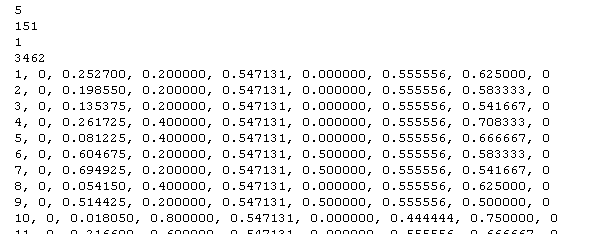
Generate Neural Network Input Files
The first part of this process is the same as Calculating a Response Theme for the weights of evidence and logistic regression methods.
filename and location of the... |
Description |
Default Name |
| unique conditions theme grid | Jump to definition. | sdmuc# |
| training file |
|
train#.dta |
| data file |
|
class#.dta |
After the files have been created, the unique conditions grid theme will be added to the active view with a default name of 'Neural Network #'.
Sample input files.
| Unique conditions table in ArcView |
 |
| Neural network input Files |
| A. Unique conditions table written to neural network input file, delimited text format |
 |
| A. Unique conditions table written to neural network input file, delimited text format |
 |
| Description of
file header: Line 1 (5): Number of
evidential themes. Line 2
(151): Number of training points. Line 3
(1): Number of output components, or values to be mapped
as response themes. Line 4
(A: 3462) (B: 151): Number of unique conditions. Description of data columns: Column 1: Unique condition number. Column 2: Number of training points in unique condition (not currently used). Column 3: Area of unique condition (not currently used). Columns 4 - 8:
Unique condition values or contents of target vectors.
Column 9: The output component |
| Next | Section Contents | Home |
![]()